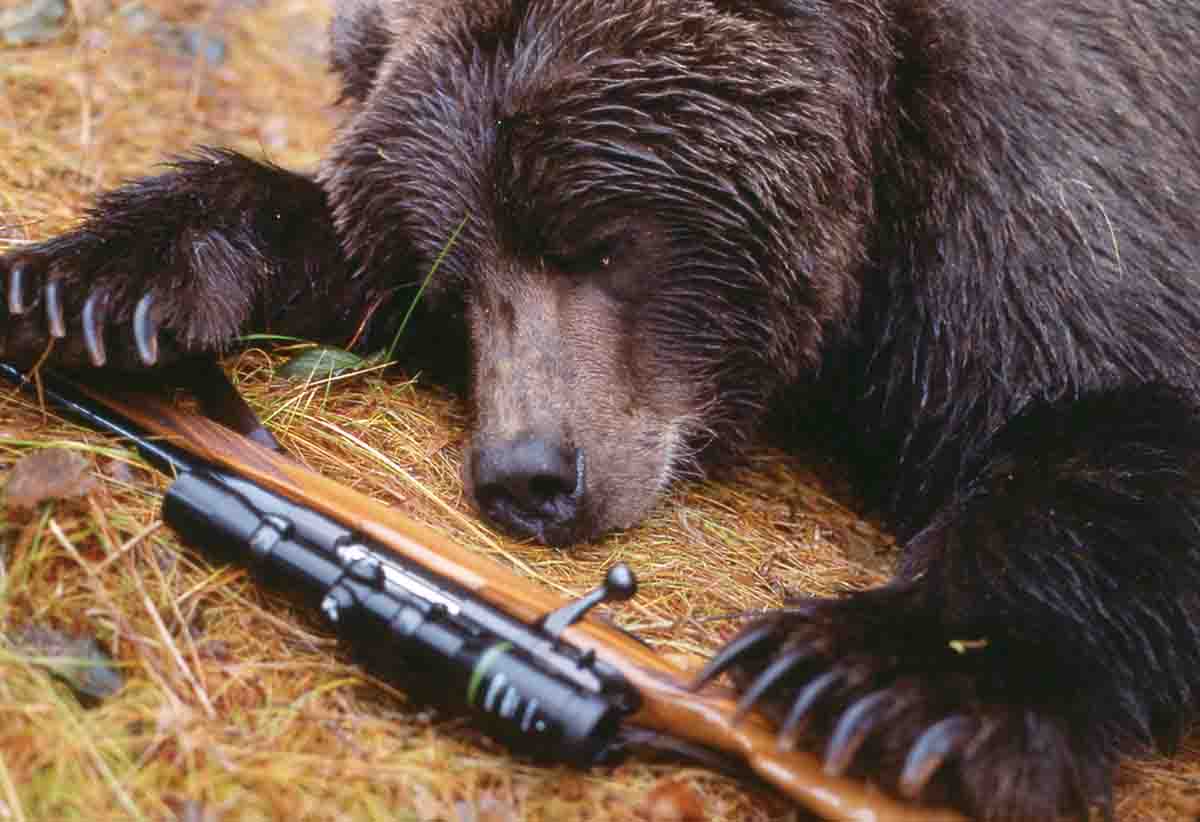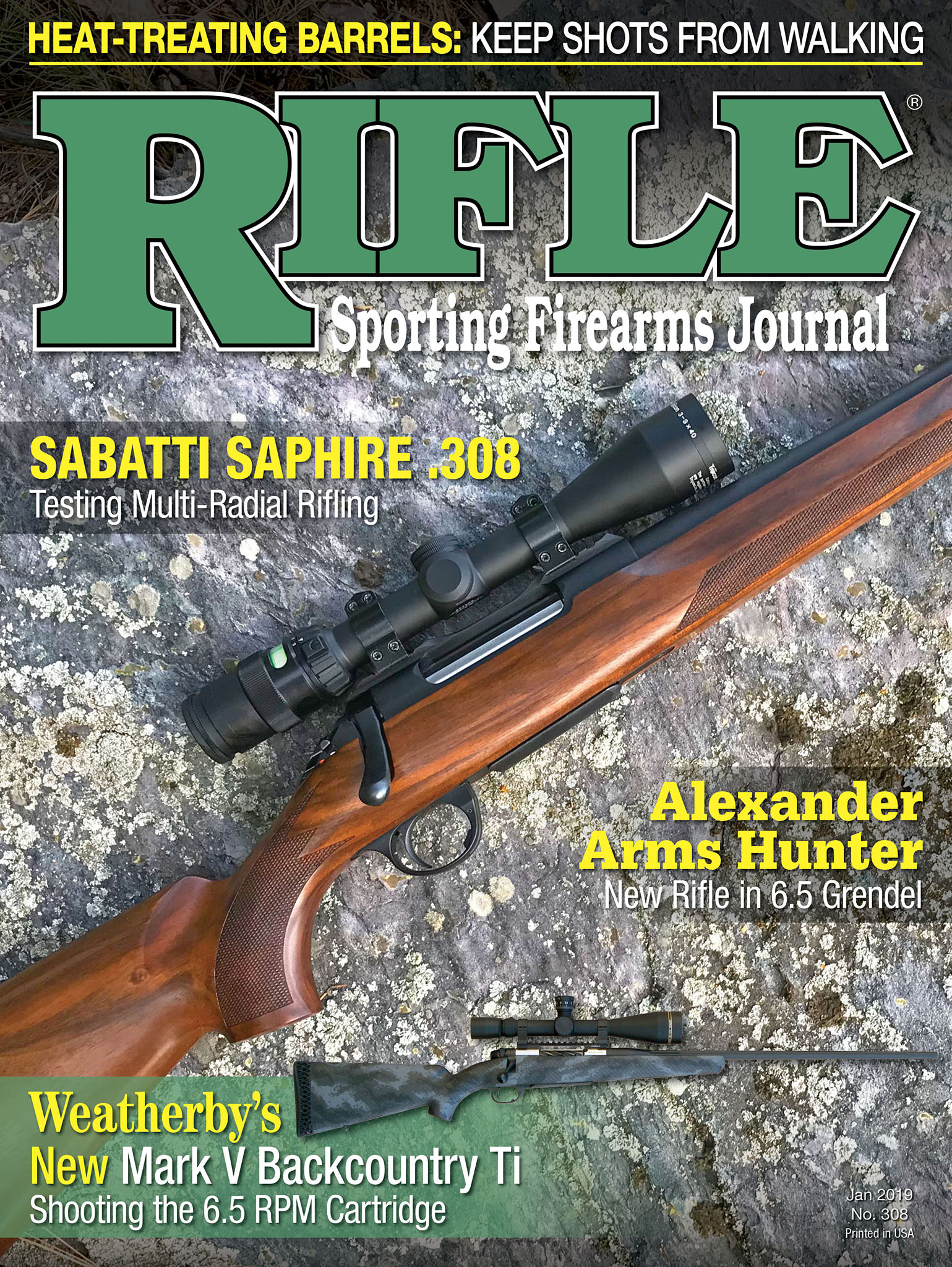Walnut Hill
The Education of a Rifleman
column By: Terry Wieland | March, 20
Every so often, a letter arrives with a bald, bold question: “Yeah, but what do you shoot?” This is usually related to hunting, but not always. The assumption seems to be that I can use virtually any rifle that catches my fancy – which is not quite true – so while I may sing the praises of this or that, what really counts is what I choose for my own use.

It never seemed to me that my history of rifle ownership was all that interesting to anyone but me, and then only because I might see something that makes me regret ever having parted with “Ol’ Betsy” back in my youth. Then it dawned on me that every time I see a writer like Ned Roberts, Jack O’Connor or John Amber recount the history of his own rifle shooting, I read it with great interest to see what exactly led him to where he was late in life.
One thing realized as I started to think this through was that every rifle I owned taught me something. More often than not, it taught me what I should not have done, but a negative lesson is better than no lesson at all, especially if the dealer’s already cashed the check.
Ned Roberts included his own meandering journey with rifles, from start to finish, in astonishing detail through several chapters of his book on single-shot rifles. I think I knew instinctively that Major Roberts was a compulsive notetaker of the insufferable schoolmaster stamp, and his detailed account of every rifle, how it shot, what loads it liked and didn’t like, and why he parted with it confirmed the suspicion. I never kept such notes, and all I have to go by are my recollections which, through the fog of advancing years, may not be exactly pinpoint accurate.
We have to start at the beginning, and my beginning was with a Daisy Red Ryder BB gun, already rusty when at the age of nine, I inherited it from an older cousin. I shot at my first live game with it – a ruffed grouse – and missed. Next came my father’s old Cooey single-shot bolt-action .22. Cooey was a Canadian company taken over by Winchester in the 1960s. This was handed into my care when I was 13. We’d just moved to the country, I started working on the farm next door and woodchucks were a big problem.
If I had to look for an epiphany in my young life, that was it. My family did not hunt. My father owned that rifle, as well as a single-shot 12 gauge and a .32 pistol he brought back from the war, but he never hunted and rarely shot. Once I was stuck into the worthy enterprise of woodchuck control, however, I started buying gun magazines and have never looked back.
The 1960s were the great age of TV westerns, which I guess influenced me when, at the age of 15, I scraped together my farm-work money and bought a Marlin 336 .35 Remington. In Canada in 1964, a kid could do that. Not now of course. A kid could also leave the store and hitchhike home with the rifle in the near certainty of getting a ride from someone who asked about the rifle and what he hoped to hunt with it, and “the best of luck to you.” Those were the days.
Why Marlin instead of Winchester? Why .35 Remington and not .30-30? Simple: The magazines said it was a better combination, especially for bears, and the Ontario license then was for “deer and bear.” Of course, this was completely at odds with hunters in my neighborhood who generally carried one of two rifles, either a Winchester 94 .30-30 or a sporterized Lee-Enfield .303. In all the years I hunted there, I never saw another Marlin in the hands of a deer hunter.
In the 1960s, however, lever actions of all kinds were looked down on by the magazine-writing elite. Bolt actions were the thing: stronger, more powerful, more accurate, better for handloading. The market was dominated by the Winchester Model 70, with the upstart Remington 700 clamoring for attention while the big dollars were wooed by Weatherby with its Mark V and Browning with its FN-made Mauser.
I had to have a bolt action, but since any of the above were far beyond my farm-hand’s economic capability, I got a cut-down Enfield P17 instead. It was ugly even to my unsophisticated eyes, but it was a .30-06, a serious cartridge. Add some RCBS dies and Hornady bullets and I was away to the races.
Except for two Lee-Enfields (a No. 1 Mk. III and a No. 4 Mk. I, both in unadulterated military form with bayonets), these constituted my collection until about 10 years later. During that time, I went to work in newspapers, then sold anything that would bring a dime to finance my first trip to Africa to practice the precarious art of freelancing. I left home with a one-way ticket to London and $210 to my name and limped home four months later, having seen some of Europe and quite a bit of East Africa, including a rat’s eye view of Uganda and the southern Sudan.
In 1975, after another trip to Africa, and having landed a big-time journalism job, I decided it was time to get a real hunting rifle and prepare for something more than chasing whitetails in the woods. For reasons I cannot explain, my eye fell upon a Weatherby Mark V chambered in the admirable .300 Weatherby Magnum. It was one of the last of the German-made Mark Vs, was smooth as silk and highly ergonomic. It also had the optional 24-inch barrel, so while I was getting all the muzzle blast and recoil a .300 magnum could deliver, I was getting ballistics comparable to, at best, a .300 H&H. No matter. There were no chronographs, and what I didn’t know didn’t hurt me.
If nothing else, that was a lucky rifle. With it I shot two caribou in Quebec, an Alaska brown bear close-in and a British Columbia moose far out. On the first caribou trip I arrived thinking my highly sophisticated rifle would draw admiring glances. I was wrong. In the company in which I found myself, carrying a Weatherby was the mark of a dupe, not because of the short barrel and insufficient ballistics (they didn’t have chronographs either), but because Weatherbys were the property of Hollywood stars who were suckers for glitz. Or so the thinking went.
For whatever reason, Ned Roberts’s life experience with rifles seemed to be straight-line linear, whereas mine is about as linear as a skein of wool, and it was after that British Columbia hunt in 1989 that it parted into many separate strands. I never hunted with that .300 Weatherby again, although I carried two Weatherbys to Africa in 1990 (a .257 and the new .416). That same year, I hunted Dall sheep in Alaska with, of all things, a Parker-Hale Mauser chambered in 6.5x55.
Then came a watershed much like the first trip to Africa, except this one involved my about-to-be ex-wife’s lawyer, who was determined to separate me from any and all firearms. The lady pretty much succeeded, but when the dust settled, I was able to start over, putting to use what I now knew – or thought I knew – about rifles. Next time.


